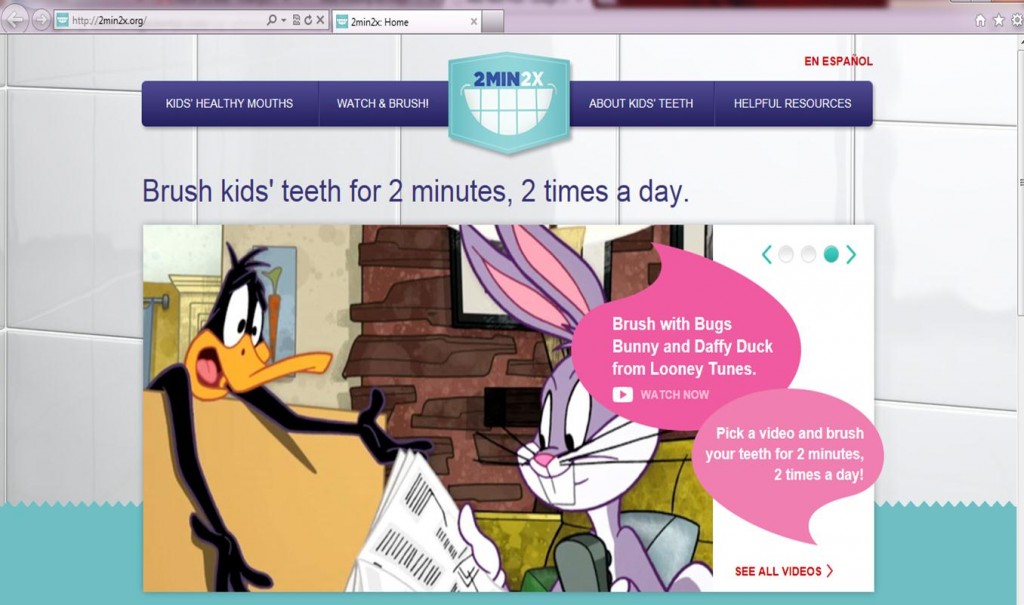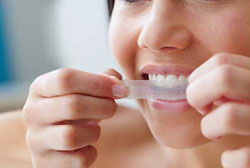We’re in this together! Caring for you after the pandemic
Our community has been through a lot over the past few years, and we remain grateful, yet vigilant, as we resume our normal habits and routines.
While many things have changed, one thing has remained the same–our commitment to your safety. Infection control has always been a top priority; we follow processes so that when you receive care, it’s both safe and comfortable. Our office follows current, up-to-date infection control recommendations made by the American Dental Association (ADA), the U.S. Centers for Disease Control and Prevention (CDC) and the Occupational Safety and Health Administration (OSHA).
As a reminder, to ensure the safety of all our patients we’ve implemented the following changes:
• Pre-screening questions will be asked prior to and at your appointment.
• Please wear your mask/face covering to the office.
• We will take your temperature and ask you to use hand sanitizer when you arrive.
• Appointments will be managed to allow for social distancing between patients.
• Patients must come to appointments alone. If the patient is a child, one adult may accompany them.
• Enhanced PPE and medical-grade air filtration utilized for all procedures.

Again, thank you so much for your support. We appreciate everyone’s patience as we work to get everyone’s needs met. Remember, we are still in a time of pandemic and we each still need to do our part. It’s possible we may be asked to go back to emergencies-only again on short notice.
As always, if you have any questions, feel free to reach out to us. We’re happy to continue serving you, and can’t wait to see your smile!
How does pregnancy affect my oral health?
I am often asked by female patients questions about oral health care during pregnancy. Since this is a topic I hold very near and dear to my heart, I hope this post will help clarify some of those questions.
Yes, there may be some changes in your oral health during pregnancy. Much like the oh-so-many other lovely side effects of pregnancy, you can chalk these up to the good ol’ surge in hormones (namely, estrogen and progesterone). Your gums will likely have an exaggerated response to dental plaque, which is that sticky, yellow, or colorless bacterial film that forms around your teeth. This is what we normally aim to brush and floss away at home, and what a dental professional removes at regular cleaning intervals. You may have the same amount of dental plaque that builds up as in pre-pregnancy, but your gums will react more. This is what we call “pregnancy gingivitis,” which may show as red, swollen, sore gums that easily bleed. If you had gingivitis before pregnancy, the condition will likely worsen. If you had gum disease (periodontal disease) before pregnancy, the condition will also likely worsen. Research has shown that women with active gum disease during pregnancy may be at a higher risk for a pre-term birth and/or low baby birth weight.
On top of all this, pregnant women are also at risk for developing pregnancy tumors–inflammatory, non-cancerous growths that develop when swollen gums become irritated. Normally, the tumors are left alone and will usually shrink on their own after the baby’s birth, but if it’s really uncomfortable and interferes with your daily activities, we may recommend removing it.
So what can be done to to prevent all of this? If you are thinking about getting pregnant, you need to see your dentist to make sure that everything is healthy and treatment needs are addressed. If you are pregnant, you absolutely need to continue to see your dentist for check-ups and cleanings. Often times, we even recommend extra cleanings during pregnancy to help keep the gums healthy and comfortable. Non-emergency procedures generally can be performed throughout pregnancy, though during second trimester may be most comfortable for mamas-to-be. Emergency dental treatment to address severe pain or infection can be treated at any time, but we usually like to consult with your obstetrician if anesthetics or medications are to be used. And what about x-rays? The American Dental Association recommends avoiding routine or elective x-rays during pregnancy.
Questions? Feel free to contact us or book an appointment–we’re happy to help! Be sure to follow us on Facebook and Twitter for the latest oral health info. Here’s to happy, healthy pregnancies for everyone!
Cheers,
Dr. Tang
For more information:
http://www.deltadentalins.com/oral_health/pregnancy2.html
New Children’s Dental Health Campaign is Cool

Is everybody ready for the end of the year? As 2012 comes to a close, we’ve had the pleasure of meeting so many wonderful new families in the area, with children of all ages. I see all too often that the little ones, especially, need a little help with their brushing and flossing at home. Tooth decay is very preventable. Now, there’s some high tech help, parents!
In August, a big children’s oral health literacy campaign was launched as a joint effort between the Partnership for Healthy Mouths, Healthy Lives, and the Ad Council (including the California Dental Association and 35 other dental organizations). Their Kids Healthy Mouths campaign encourages children to brush their teeth for “2min2x,” or 2 minutes, twice a day.
Parents, check out their website for helpful brushing charts, dental health info, and even a myriad of 2-minute long videos designed to be watched while your child brushes their teeth. They even have handy apps you can download onto your tablets and smartphones, making it portable for viewing ease.
Wondering about the oral health of your child? Still needing to get your child in by the end of year? Don’t skimp on those ever important check-ups and cleanings! Book your appointment now, or contact us with your questions.
Cheers to good health,
Vivian Tang, DDS
Helping a Good Cause
Happy spring, everyone! There’s a wonderful event right around the corner, one that supports a cause that is very near and dear to our heart. Yes, it’s not specifically related to dental health, but as you may have heard, dental and total body health are often inter-related.
Every 3 minutes, a woman is diagnosed with breast cancer in the United States. Tri-Valley SOCKs is a local non-profit organization that raises money for breast cancer research, treatment, and educational programs. Their big event of the year is “Bras for the Cause,” a fundraiser walk taking place right here in Pleasanton (passing right by our office!) on Mother’s Day weekend, Saturday, May 12. We are happy to make a donation towards this wonderful group’s super fun event. If you are interested in participating in this event, please check out their website for more information, or stop by our office to pick up a brochure.
While breast cancer may not have a very direct effect on dental health, the treatments for breast cancer may have dental consequences. If you are interested in improving your dental and subsequently, your general health, feel free to contact us with any questions. Follow us on Facebook and Twitter for the latest posts!
Cheers to good health!
Vivian Tang, D.D.S.
“But aren’t they just baby teeth?” Actually, they matter.
I recently had the pleasure of volunteering in the annual American Dental Association’s “Give Kids A Smile” day, on Saturday, February 4th. Our group of volunteer dentists provided dentistry for Bay Area children in need, seeing 73 children and providing $35,647 worth of free dentistry. Now that’s something to smile about! 🙂 Since February was Children’s Dental Health month, I thought it’d be appropriate to address children’s dental health this post.
I often hear the same questions from parents about their children’s oral health: Is it okay to share utensils with my child? Does oral health matter before my baby has any teeth? Those are just baby teeth, why do they matter? When do I need to bring my child to their first dental appointment? Is it okay to put my baby to bed with a bottle? The trouble is, many parents don’t know the answers, which is why more than a quarter of California children under age five have untreated dental decay. Dental decay is still the most common childhood disease in America.
Even before your baby sprouts teeth, oral healthcare matters. You are setting your baby up for good dental health for life! The baby teeth are important, as they shape the growth and development of the permanent teeth.
Before your baby’s teeth come in, you should use a soft washcloth to swab your baby’s gums, keeping the mouth clean after feedings. Once the first tooth comes in, you should continue using the cloth to wipe down the teeth, until about age 12 months, when an age-appropriate toothbrush with a smear of non-fluoridated toothpaste should be introduced twice daily. As your child grows and learns how to spit, I would recommend a smear of fluoridated toothpaste instead.
Don’t share spoons and other utensils with your child, you are passing cavity-causing bacteria to them. Babies are not born with these bad guys–they come from their caretakers!
Your child needs to visit the dentist 6 months after they get their first tooth, which may fall between the age of 12-18 months. At the baby’s dental wellness visit, we examine the growth and development of the mouth, polish and clean the teeth, and offer parents counseling on diet, homecare, and what to expect as baby grows. This needs to be repeated every 6 months.
When it comes to night time bottle-feeding, it’s best to not put babies to sleep with anything other than water (if you have to give a bottle). Juice and milk contain sugars (yes, even milk has natural sugars) which can lead to cavities. This is “baby bottle decay.”
These are just some of the basic topics I wanted to address for now. Parents, if you have any questions, don’t hesitate to contact us. You can also stay updated by following us on Facebook and Twitter. Also, it’s getting to be that time of year for kindergarten registration–did you know California law requires a dental exam to register? We’d be happy to see your child–book your appointment now!
Cheers,
Vivian Tang, D.D.S.
Wrinkles, thinning graying hair, and jaw shrinking?
Happy 2012! It’s been a while since our last post, we hope everyone has been having a great year so far!
I just came across an interesting article in the California Dental Society Journal: January 2012. What we have come to recognize as the aging process (getting wrinkles, graying hair, thinning hair, etc.) has just added a dental component–shrinking jaws!
In studies spanning the decades, researchers studied molds taken on subjects’ jaws in their 20s, 30s, and 40s. Unequivocally, they found a decrease in jaw length and width, leading to eventual crowding of the teeth. The amount varied from patient to patient, and whether or not they had their wisdom teeth removed had no effect.
What we can take away from this is that it’s a normal phenomenon, and if we are planning for major bite constructions for patients, it’s hard to have an outcome that is completely stable in the future–adjust expectations accordingly. If you have any questions, please don’t hesitate to contact us!
Smiles,
Vivian Tang, D.D.S.
Why the increase in cavities in adults?
Once people reach adulthood, it is often thought that cavities are a thing of the past. You outgrow cavities, right? Yes and no. While it is true that a person’s oral hygiene habits may improve in adulthood (e.g. regular daily flossing habits, better brushing techniques), for many adults, their dietary habits are often worse without realizing it. It even seems to be an increasing trend that we see more adult tooth decay, or people who have never had a cavity growing up suddenly get a whole slew of them. Let’s talk about what may be behind this trend.
To start with the basics, cavities are a very diet dependent disease, meaning what you eat and drink on a daily basis has a direct effect . But you don’t eat candy or soda, you say? Well, to the cavity bugs, sugar is sugar, whether it’s added or not, processed or natural, organic or non-organic. Yes, there’s the obvious candies and sodas you’ve known since childhood, but there’s also the sneaky ones, such as:
◊ juice (even organic, or the ones without added sugar)
◊ fresh or dried fruits (even the ones without added sugar)
◊ milk
◊ crackers
◊ vitamin drinks
◊ most coffee drinks such as lattes, cappucinos, or coffee (with milk and/or sweetener)
You get the idea. Again, as in my previous post on acidic drinks, I say anything in moderation. Yes, milk and fresh fruits are good for your health, but I wouldn’t eat them all day long. The worst thing you can do is sip or munch on these items frequently during the day. For many working adults nowadays, that equates to long hours at the desk with coffee with milk and sweetener. That provides the bad bugs a constant, frequent supply of nutrition to grow and cause damage. If you must, such as people who need to eat frequent small meals, I’d suggest drinking/rinsing with water afterwards, chewing some Trident gum with xylitol for 15 minutes, or trying to brush and floss during the day. See your dentist regularly for professional exams, cleanings, preventive fluoride treatments, as well as recommendations on home treatments.
Have questions? Drop us a note, Like us on Facebook or Follow us on Twitter for oral health info!
Happy holiday eating!
Vivian Tang, D.D.S.
Happy Halloween!
Happy Halloween from Solage Dental! We hope everyone has a safe and happy time.
As you can tell, I’m a big fan of “The Nightmare Before Christmas!”
Cheers,
Vivian Tang, D.D.S.
I’m grinding my teeth?
“What? I don’t grind my teeth…?” This is an answer I often hear to a very common problem I see, especially nowadays. Let’s clarify things.
Teeth grinding and/or clenching is a sub-concious activity, meaning people are usually doing it without realizing it, whether it’s during the day while awake or at night during sleep. I’ve had patients who do it while sleeping, or while driving or working during the day. It’s very much tied to our daily stress levels–when people are stressed (and most people are nowadays!), they are more likely to grind/clench the teeth. A previously published California Dental Association Journal in May 2010 confirmed the connection to daily stress, and found that no specific age group, education level, or gender were found to be at higher risk for night grinding. These people are also apt to be more anxious and avoid conflict when faced with problems.
If this activity continues, short-term and long-term effects can be numerous. In the short-term, you may feel a lot of muscle tension of the jaws/neck/shoulders, headaches/migraines, and a general throbbing or soreness of the teeth. Often times, people think they have a big cavity or a tooth infection, when in fact, the cause of the pain is teeth grinding. In the long run, you can grind your teeth down to little stumps, have jaw joint problems, chip or crack your teeth, then requiring some major dental work (fillings, crowns, root canals, etc.).
So what can be done, from a dental standpoint? Obviously, it’s hard to completely rid our lives of stress. I think we can all benefit dentally and medically by finding healthy outlets to channel stress, whether it’s yoga, reading, exercising, spending time with loved ones, etc. A regular dental exam is important for identifying potential signs symptoms of teeth grinding or clenching, as most people are unaware that they are even doing it.
If necessary, we recommend nightguards to protect our teeth, muscles, and joints. A nightguard is a device that simply covers the chewing surfaces of the teeth to remove that harmful tooth-to-tooth action, and helps ease the jaw into a more relaxed position, reducing muscular activity. There are over-the-counter as well as professionally-made custom nightguards. Ask us which is right for you. If you already have a nightguard, be sure to get it checked periodically as you may eventually wear through it.
Have any questions or topics you’d like answered? Get in touch with us! Follow us on Facebook and Twitter for the latest news.
Smiles,
Vivian Tang, D.D.S.
Is whitening safe for my teeth?
We were very happy to participate in the Luxe Wedding Faire exhibition this past Sunday, August 7! Congrats to all the engaged couples, we were very pleased to meet and talk with many of you! In this post, I would like to address what I found myself repeating over and over again throughout the course of the day. If it’s on the minds of the brides-to-be, it’s on the minds of many other people.
Let’s start with the basics. Staining can be classified in two ways–extrinsic (external) and intrinsic (internal). Stains occur naturally throughout the course of our lives, and can vary depending on what kinds of habits a person may have–from foods and drinks, aging, smoking, oral hygiene habits, etc. When it comes to foods and drinks, I always say if it stains your clothes, it has the potential to stain your teeth!
External stains may be removed by cleaning of the teeth–at home and more effectively, professionally, in the dental office. Internal stains, that deeper color that comes from within the tooth, need to removed with tooth whitening treatments utilizing either hydrogen or carbamide peroxide gels. Whitening can be a perfectly safe (if professionally supervised) and conservative way to improve the appearance of your smile. It doesn’t damage the teeth, though you may experience some common temporary side effects such as tooth sensitivity and burns to the gums. Before doing any treatment, realize that everybody has different whitening goals, some which cannot be achieved with just one round of treatment. Also, the effects of whitening are not permanent, as teeth will stain again over time, and touch-ups may be necessary once a year or as needed.
Whitening treatments can be either over-the-counter (OTC) or professional. The difference between the two is the strength of the peroxide gel. OTC whitening can be quite cost-effective, and products such as Crest Whitestrips may work well enough for some people. However, not everyone’s mouths are one-size-fits-all. For instance, crowded or overlapping teeth may not get good enough contact with the gel strip, or some people’s smiles show more teeth than the standard 6-teeth strip. Some people also may not get the dramatic results they were hoping for. Then, you may want to consider professional whitening with stronger peroxide gel.
In our office, we are happy to offer different professional treatments, ranging from take-home to one hour in-office treatments. I highly recommend a dental exam prior to any whitening treatment, whether it’s professional or OTC–there are many things that may make a person an unsuitable candidate, and I’d be happy to offer tips to improve the whitening effects and also to practically eliminate the potential side effects.
Contact our office if you have any questions! Stay tuned through Facebook or follow us on Twitter for more oral health info!
Happy whitening!
Vivian Tang, D.D.S.
*Photo from http://www.overthecounterteethwhitening.org/










